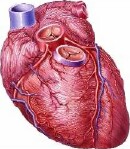
TUESDAY, Oct. 16 (HealthDay News) — When it comes to coronary artery disease in the United States, there’s good news and bad news.
The good news? Average levels of the worst forms of cholesterol are dropping among U.S. adults.
The bad news? Americans are achieving those better numbers not so much by changing their diet or ramping up their exercise, but largely by taking statins: cholesterol-lowering medications.
A comprehensive look at how Americans are faring in the battle against coronary artery disease shows that over about 22 years, total cholesterol and LDL (low-density lipoprotein cholesterol, often called “bad” cholesterol) have declined. But the percentage of adults taking anti-cholesterol medications has climbed as well.
In addition to looking at the average levels of cholesterol and factors associated with increased risk of heart disease, the researchers noted whether participants were taking statins. They did not note, however, the type of statin taken or the strength of the dose.
Statin drugs include Lipitor (atorvastatin), Lescol (fluvastatin), Pravachol (pravastatin), Crestor (rosuvastatin) and Zocor (simvastatin).
Researchers also wanted a better understanding of whether the risk for heart disease was being affected by progress in drug treatment and health education.
“We are interested in studying total and bad cholesterol because they’re risk factors for coronary artery disease,” explained Margaret Carroll, a study author and survey statistician with the U.S. Centers for Disease Control and Prevention, in Hyattsville, Md. “And this study shows the trends are favorable.”
The researchers examined the amount of lipids (fats, oils) in the blood of adults between 1988 and 2010, using three cross-sectional U.S. National Health and Nutrition Examination surveys involving nearly 38,000 people combined.
The study was published Oct. 17 in the Journal of the American Medical Association.
During the study period, levels of the two types of cholesterol that contribute to heart and vascular disease, LDL and non-HDL, went down, while HDL — which contributes to heart health — rose. The changes were associated with increasing use of lipid-lowering medications and some favorable changes in diet.
Total cholesterol, on average, declined from 206 milligrams per deciliter (mg/dL) in the 1988-1994 survey to 196 mg/dL in the 2007-2010 survey, the investigators found.
The percentage of adults taking lipid-lowering medications climbed from 3.4 percent in the 1988-1994 survey to 15.5 percent in the 2007-2010 survey.
The good news was tempered by the reality of what Americans still need to do to avoid coronary artery disease, said Dr. Gregg Fonarow, a professor of cardiology at the University of California, Los Angeles. “Cholesterol levels are just one measure of heart health,” he said. “While cholesterol levels have significantly improved in the U.S. during this 1998-to-2010 time frame, other components of heart health — such as maintaining a healthy body weight and participating in regular physical exercise — have not.”
Risk factors for coronary artery disease include being overweight or obese, physical inactivity, cigarette smoking, excess alcohol intake and type 2 diabetes.
Dr. Ralph Sacco, president of the American Heart Association and chairman of neurology at the University of Miami Miller School of Medicine, sees some signs of progress.
The study authors suggest some dietary changes, such as reductions in consumption of trans fats, have helped. “We are hopeful that some of the increased awareness about diet may be paying off, but we still have quite a long way to go,” Sacco said.
The researchers noted that cholesterol levels also dropped among those not taking statins and obese adults of both genders, even after taking into account the possible effects of ethnicity, age and BMI (a measurement based on weight and height).
Coronary artery disease is the leading cause of death in the United States in both men and women. It occurs when the arteries that supply blood to the heart become hardened and narrowed, due to the buildup of cholesterol and other material, called plaque, inside their walls.
Fonarow said it is important to note that “during this study time frame, there were corresponding reductions in heart attack and strokes along with a greater than 25 percent reduction in cardiovascular deaths in the United States.”
Fonarow emphasized that we still need to do better. “These data suggest that Americans have improved their cholesterol levels and as a result have improved their heart health. Nevertheless, there are further opportunities to improve lifestyle modification and use of statin medications in eligible men and women with or at risk for cardiovascular disease,” he added.
More information
Learn more about heart disease at the U.S. National Library of Medicine.

